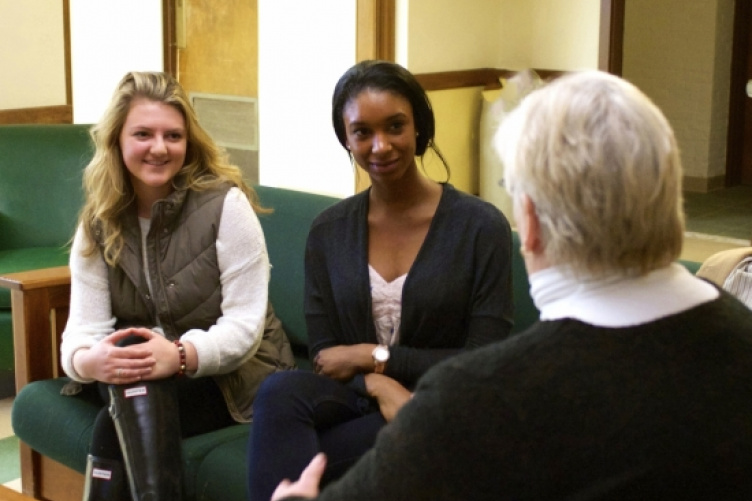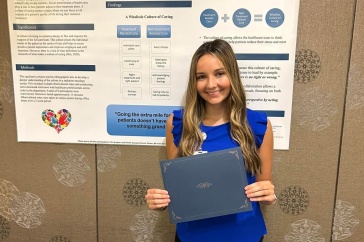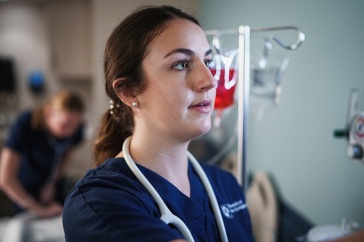
Isatu Bah ’17 has a simple example of how health care works in this country. It’s one she didn’t give much thought to until taking the course “U.S. health care systems” with professor Barbara Arrington.
The class got Bah thinking. And talking. And that’s when she realized just how real the discrepancies are.
“I take a medication that costs me $25. I found out a friend takes the same medication and it costs her about $180,” says Bah. “She pays more than double because she doesn’t have insurance. Something as simple as that puts things in perspective.”
Perspective: That is one of the key takeaways for students, Arrington says of the course that explores costs and policy issues as well as the social, political, ethical, professional, legal and technological influences on health care systems.
“The course is designed to create an educated citizen,” says Arrington, a professor of health management and policy and former dean of the College of Health and Human Services. “We talk about what someone who lives and works in this country needs to understand to be an informed consumer.”
That means discussing health care reform, with all its parts and pieces — what works, what doesn’t work, and the factors that drive need and use. One way students come to understand the issues is by evaluating their own health care coverage, looking at co-pays, deductibles and what the plan does and doesn’t include.
“I think everyone should take this course,” says Lauren Eife ’18. “It has really opened my eyes. With everything changing, you really need to know what to look for in health care.”
Students work in groups to answer one of the 16 core questions such as “Does the U.S. health care system function as a system?” “How well does our system perform in terms of cost?” and “How does information on vulnerable populations’ health help us understand why some people are healthy and some are not?”
Additional discussions, reflections after viewing films on health care practices and assigned readings end up leading many to the same conclusion, Arrington says.
“Students will say, ‘How did we get here?’” she says. The answer: “Every system is perfectly designed for its outcome."
Reform discussions range from President Franklin D. Roosevelt’s 1935 failed attempt to include publically funded health care in Social Security legislation to the passing of Medicare in 1965 under President Lyndon B. Johnson, to the Affordable Care Act (ACA), passed in 2010.
“All of that gives us a window into the future of where health care is going. By studying the past, we know more about the future,” says Bah, a neuroscience and management major who plans to go to medical school. “We can see how unsystematic changes have been — things have been patchworked together.”
“Too often it seems doctors are so quick to prescribe medications without getting to the root of the problem,” Eife says. “We’ve been looking at situations where patients are seen in 15 minutes, in and out, and the benefits of doctors taking more time — you can see the results. It makes you see that there may be another way.”
Arrington talks about the political vantages of health care – cost versus access — and says both are important.
“For most of our history, market justice has dominated our thinking about health care in the U.S. The Affordable Care Act is a sharp turn toward social justice as the core driver. For years, supporters of both approaches have asserted that the two ways of thinking are diametrically opposed — an either/or proposition. What ACA and related policy are attempting is a both/and approach,” she says.
“I want students to leave here with a clear understanding that an overall commitment to a social justice approach to health and health care benefits everyone, even the staunchest pro-market proponent.”
Bah and Eife want people to know they have options — and the opportunity to become what they are becoming: part of an educated citizenship.
“It’s important for students to be informed. We’re not going to be living with our parents forever,” Eife says. “We are learning real-world skills that we’re going to need.”
Adds Bah, “The real world is right next door.”
About This Series:
In the Classroom is an occassional series of articles that offer an inside peek at some of the most interesting courses being taught this semester at UNH. Read other stories in the series here.

















































